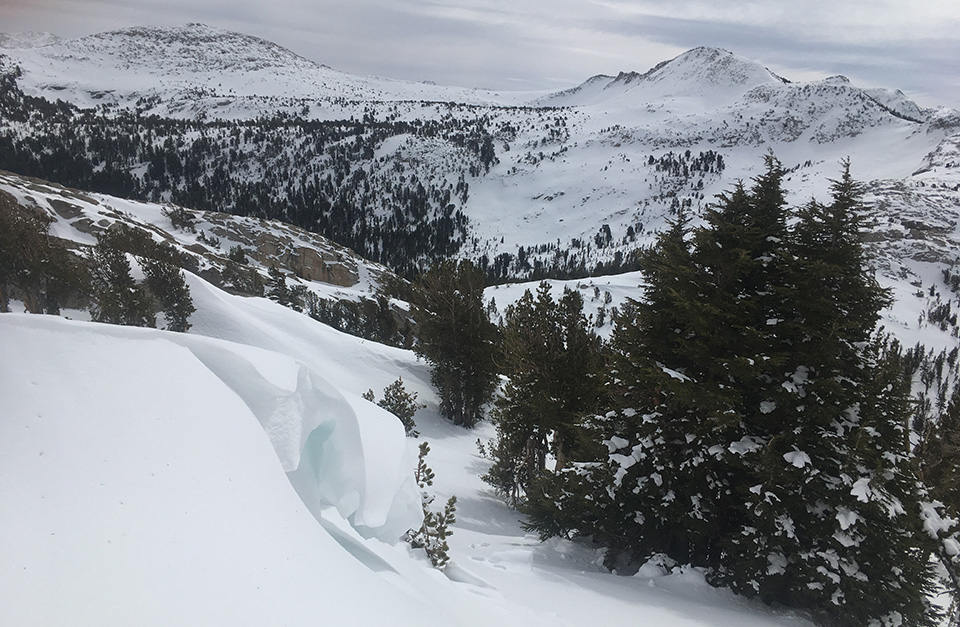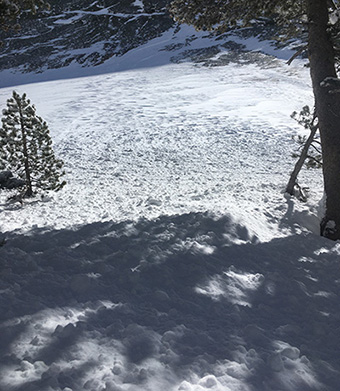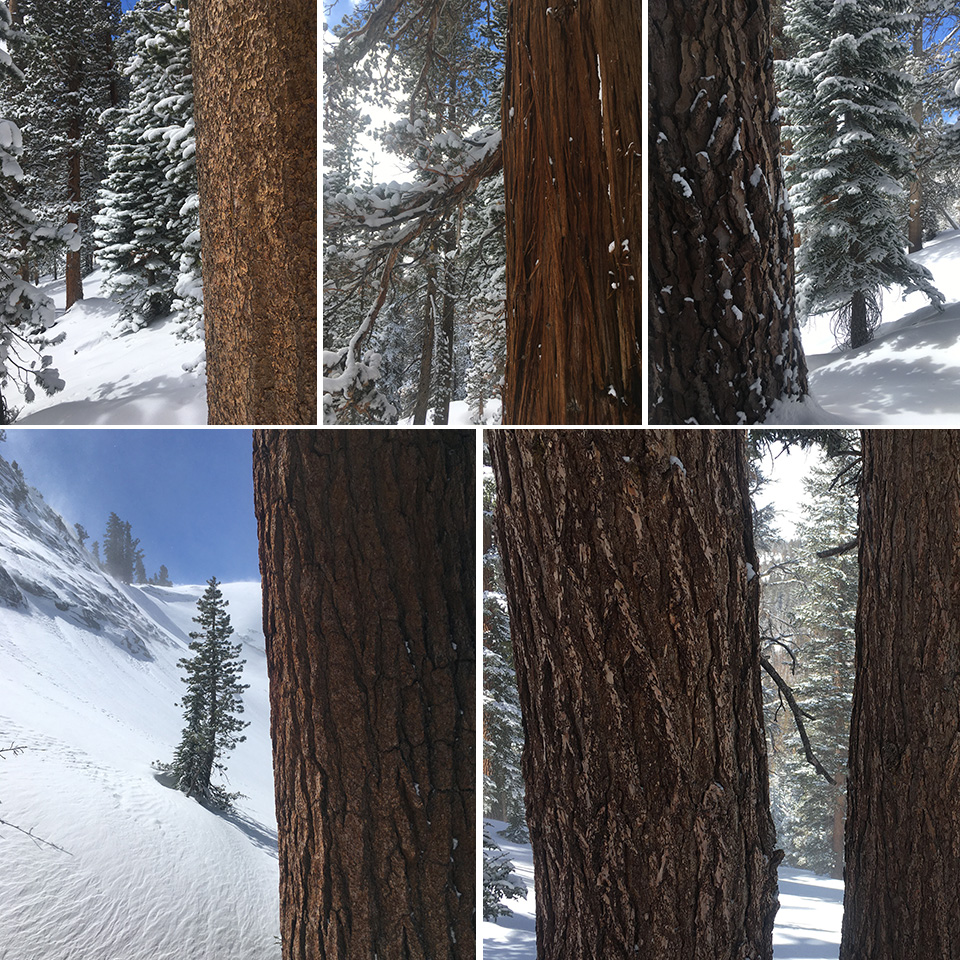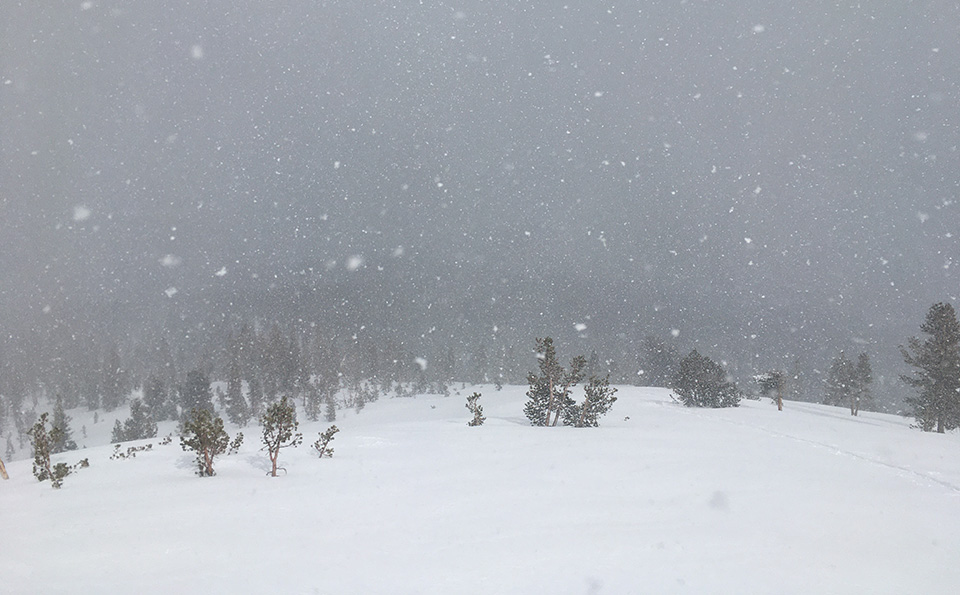New snow: 17 inches
Total settled snow depth: 47 inches (at 8,600 feet)
High temperature: 45°F (March 14)
Low temperature: -6°F (March 13)
Ski Conditions and Weather
It was a wintry week in the mountains. Colder than normal temperatures and a few weather disturbances brought some much needed precipitation to the Sierra Nevada. However, this snow was quite low density with only 0.71 inches of water. There were periods of strong winds that resulted in both the loading (on leeward slopes) and scouring (on windward slopes) of snow in the higher elevations. The powder is typically deposited on northeast slopes during the storms only to become wind affected subsequently when the winds shift out of the northeast (from the southwest). This sure keeps one on their toes when planning safe travel in avalanche terrain; a slope that may be good skiing one day may not be so desirable the next.

Ski conditions presently fall into the “mid-winter” category. Here at the middle elevations today there is boot top powder on top of a firm melt freeze crust. The longer days and warming temperatures will eventually cause a transition to a wetter snow surface. A prolonged dry spell and a melt/freeze cycle could result in some spring ski conditions.
Avalanche and Snowpack Conditions

The avalanche hazard has varied quite a bit lately. The primary hazard this week was from wind slab avalanches. We observed several shallow wind slab avalanches on the north side of Lembert Dome after strong southwest winds. These avalanches were relatively small, but could be problematic for travelers caught in the wrong place at the wrong time. Solar aspects could start shedding some of the new snow during the heat of the afternoon. As we progress into spring, mountain travelers should be prepared for changeable conditions as diurnal heating, and overnight cooling of the snowpack become the primary drivers of avalanche hazard and ski conditions.
Tree Life
Unlike the summer months when there is backdrop of brown and green, it is hard to see the trees for the forest. When there is a blanket of newly fallen snow however, it is much easier to see the forest for the trees and not just their silhouettes and dangling branches. With the soft morning light, one can even distinguish the tree species by the mere textures and colors of their bark. Here are a few examples of lodgepole pine (Pinus contorta), western juniper (Juniperusoccidentalis), Red fir (Abies magnifica), western white pine (Pinus monticola), and mountain hemlock (Tsuga mertensiana).

General Information
The Tuolumne Meadows Ski Hut is closed for the 2020-2021 season.

